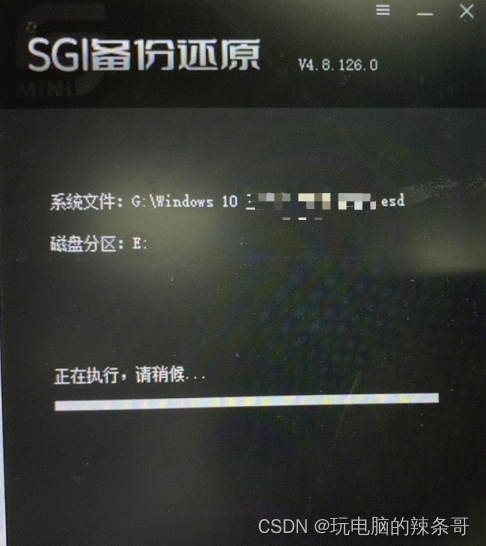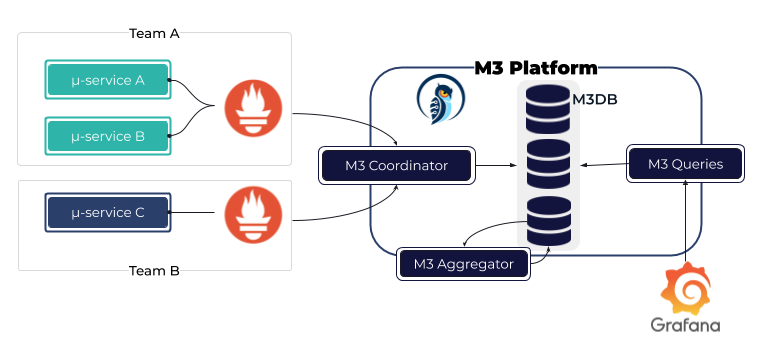1 Permutation and combination
1.1 array
\]
- Definition : from n The choice is m An ordered sequence of numbers , The number of different series .
- explain : from n Choose one of them , Yes n Seed selection , Choose the second , from n-1 Choose from , Yes n-1 Seed selection , And so on , Mathematical combination of basis Multiplication principle So the formula is \(n(n-1)(n-2)...(n-m+1)\).
1.2 Combine
\]
- Definition : from n individual Choose from m Of which , The number of different sets .
- explain : The case of removing selected repeating elements from the arrangement is combination , such as {1,2,3}、{2,3,1} identical , So the formula is $ \frac{A_nm}{A_mm}$, From n individual Selected from m individual , Remove after arrangement m Number of full permutations .
- in addition :\(C_n^m\) Another way of writing is : \(\binom{n}{m}\), pronounce as n choose m.
- inference :
- \(\binom{n}{m}+\binom{n}{m-1}=\binom{m+1}{i}\) ,( Also called Pascal's law ), It is easy to prove after entering the formula and reducing points .
binomial theorem
\]
- prove :
\]
\]
\]
\]
\]
\]
\]
\]
\]
\]
- inference :
- $ C_n0+C_n1+C_n2\cdots+C_nn=(1+1)n=2n $
- $ C_n0-C_n1+C_n2-C_n3\cdots +C_nn=(1-1)n=(0)^n$
Lucas Theorem
if p Prime number , For any integer $ 1 \le m \le n $ Yes :
\]
It is difficult to prove , Knowledge of generating functions is needed , You can have a look if you are interested . Don't ask me. , I will not .
Using this formula, we can take the module of the more troublesome combinatorial numbers .
Pigeon nest theorem
Definition : take n+1 An object , Divided into n Group , Then at least one group has two ( Or more ) The object .
Extension : take n An object , Divided into k Group , Then there is at least one group , Contains greater than or equal to \(\lceil \frac{n}{k} \rceil\) Items .
Example : Here you are. n A positive integer \(A=\{a_1,a_2...a_n\}\), And a positive integer c, ask , Can you find one A Subset B,B The sum of the elements in is c Multiple , If you can, output their number .\(1 \le c \le n \le 10^5 ,1 \le a_i \le 10^5\).
- solution : set up A The prefixes and are $ sum_i $ ,
\[ If you have any sum_l \equiv sum_r~(mod~c)
\]\[ namely sum_l -sum_r\equiv0 ~(mod~c)
\]\[ that \sum_{i=l+1}^ra_i\equiv0 ~(mod~c)
\]\[ therefore \sum_{i=l+1}^ra_i That is the solution
\]\[ The number of prefixes and is n , model c In the case of 0 The situation of , All in all c-1 In this case ,n>c-1
\]\[ According to the pigeon nest theorem There must be sum_l \equiv sum_r~(mod~c)
\]\[ in summary : The problem will always be solved , The solution is \{ a_{l+1},a_{l+2},\cdots ,a_r |sum_l \equiv sum_r~(mod~c) \}
\]
The inclusion exclusion theorem
Definition :$$ Equipped with n A collection of S_i , |S_i| Express S_i Size , Yes :$$
\[\left| \bigcup_{i=1}^nS_i \right|=\sum_{i=1}^{n}|S_i|-\sum_{1 \le i < j \le n}|S_i\cap S_j|+\sum_{1 \le i < j <k \le n}|S_i\cap S_j\cap S_k|- \cdots
\]\[+(-1)^{m-1}\sum_{a_i<a_{i+1}}\left| \bigcap_{i=1}^mS_{a_i} \right|+ \cdots + (-1)^{n-1}\left| \bigcap_{i=1}^nS_i \right|
\]The formula looks so complicated 、 It's scary , But it's actually a very simple theorem .
As shown in the figure below, there are collections A、B、C:
Obviously there is :
\[|A\cup B\cup C|= |A|+|B|+|C|-|A\cap B|-|A\cap C| -|B\cap C|+|A\cap B\cap C|
\]Extend this problem to the general situation , It is the well-known principle of inclusion and exclusion .
prove :
\[ set up ~T_i~ For the elements ~a_i~ In collection ~S_1,S_2,\cdots ,S_n~ Is the number of times
\]\[ Because the inclusion exclusion theorem formula is equivalent to ~1-n~ All combinations of , That is, the complete set of combinatorial numbers , At this point, we choose the containing element in the complete set ~a_i~ The combination of
\]\[ So in the inclusion exclusion theorem formula , Medium element ~a_i~ The number of occurrences is zero :
\]\[\sum_{j=1}^{T_i} (-1)^{i-1}\binom{T_i}{j}
\]\[ According to the binomial theorem :(1-1)^n=\sum_{i=0}^{n}\binom{n}{i}(-1)^{i} , Yes :
\]\[0= 1-\sum_{i=1}^{n} (-1)^{i-1}\binom{n}{i}
\]\[ namely :\sum_{i=1}^{n} (-1)^{i-1}\binom{n}{i}=1
\]\[ therefore \sum_{j=1}^{T_i} (-1)^{i-1}\binom{T_i}{j} =1, Element ~a_i~ The number of occurrences is zero ~1
\]\[ That is to say, in the formula of the inclusion exclusion theorem, the number of occurrences of any element is ~1 , Then merging is union .
\]Example : Interval coprime problem , The number of Coprime pairs in two intervals , The range of the two intervals shall not exceed \(10^6\).
Before considering this problem, let's consider a sub problem of it , a number \(x\) And an interval \([l,r]\) The coprime problem of . Deal with this problem , The simplest way must be to traverse the interval and then use \(gcd\) , The complexity is \(O(NlogN)\),n Is the interval length , Add another interval that \(O(N^2logN)\), Obviously too slow , At this time, we can think in reverse , Conversion problem , We can consider finding the number of non coprime , Then subtract the number of non coprime from all the numbers . Not mutually prime, that is , There are common factors , If the problem is transformed into finding the number of common factors , That's easy to deal with , For example, if all calculations have factors 2, namely 2 The number of multiples of , Just say the division of interval numbers 2 Just fine , That is, as long as \(O(1)\) The number of numbers with a certain factor in the interval can be calculated by the complexity of , That is to say, we can count first \(x\) Factoring , obtain $ m $ Factor $ a_1,a_2,\cdots ,a_m $, For a certain factor, we can find the interval \([l,r]\) in , Inclusion factor $ a_i $ The number of $ b_i $, If one factor is \(a_1=3\) , Interval is $ [5,18] $ , So the corresponding $ b_1=\lfloor \frac{18-5+1}{3} \rfloor=5, That is to say {6,9,12,15,18} this 5 Number , Yes $ $b
_i=\lfloor \frac{r-l+1}{a_i} \rfloor $
It seems that we put all $ b_i $ Together, we can solve this problem , But in fact, if you put $ b_i $ Add up , The final answer will be a lot more , For example, at the same time 2 and 3 As a number of factors , If we just add , that 6 The multiple of is multiplied , And if there is 2 and 6 It's a factor , that 6 It must also be a factor , That would be even more troublesome . To solve this problem , We also need to break down the problem again , We will $ x $ Split into prime factors $ p_1,p_2,\cdots,p_k $, set up \(k\) Set of copies \(S_1,S_2,\cdots ,S_k\) , \(S_i\) Indicates that the interval contains factors \(p_i\) A set of numbers of . according to The inclusion exclusion theorem At this point, there is the value we require, that is :\[\left| \bigcup_{i=1}^kS_i \right| =\sum_{j=1}^k \left((-1)^{j-1}\sum_{a_i<a_{i+1}}\left| \bigcap_{i=1}^jS_{a_i} \right| \right)
\]\[ set up \sum_{a_i<a_{i+1}}\left| \bigcap_{i=1}^jS_{a_i} \right| by A_j
\]\[ Yes :\left| \bigcup_{i=1}^kS_i \right| =\sum_{j=1}^k (-1)^{j-1} A_j
\]\[ set up function ~f(x), Express ~x~ Quantity of qualitative factors
\]\[ Yes :A_j=\sum_{f(a_i)=j} b_i
\]there \(A_j\) The practical meaning of is that the interval contains a qualitative factor greater than or equal to \(j\) Number of , So we find out the number of its prime factor for each factor, corresponding to its \(b_i\) Add up to \(A_j\) And then we can find out \(A_j\) Value . Put it another way , Factors are all non empty combinations of prime factors , What we ask \(b_i\) That is, under this combination, how many intervals there are and how many corresponding numbers , For example, if you combine all the factors in pairs \(b_i\) Value accumulation , Then we can find out how many numbers in the interval contain two or more prime factors , And then through The inclusion exclusion theorem duplicate removal , We can get the solution .
How complex is this method ? Let's first observe the steps of this method- Yes \(x\) Decomposing prime factor
- Make a full combination of prime factors , And then calculate the corresponding \(b_i\) The value is added to \(A_j\) On .
- Calculate the formula of inclusion exclusion theorem , Get the number of non coprime pairs .
- Subtract the amount calculated above from the range of the interval , Get the solution .
step 1 Use Pollard-rho The algorithm decomposes the prime factor , The complexity is \(O(n^{\frac{1}{4}})\), step 2 Make a full combination of prime factors , hypothesis \(x\) by $ p_1{n_1}p_2{n_2}\cdots p_n^{n_k} $ All in all $ (n_1+1)(n_2+1)\cdots (n_k+1) -1$ In this case , reduce 1 Because 1 Although it is a factor , But it's not ,k Is the kind and quantity of qualitative factors , in consideration of \(1081080=2×2×2×3×3×3×5×7×11×13,256\), And calculate the corresponding \(b_i\) The complexity of the value is \(O(1)\), By looking up the table (http://wwwhomes.uni-bielefeld.de/achim/highly.txt ), It is found that its growth is lower than \(O(n^{\frac{1}{4}})\) but $ 10^6 $ Less than \(O(n^{\frac{1}{4}})\), stay . step 3 Calculate staggered addition and subtraction , Complexity $ O(k) $ . step 4 Complexity \(O(1)\). in summary , The data range is $ 10^6 $ when , The worst case requires hundreds of operations , In the scope of universality, complexity can be regarded as \(O(n^{\frac{1}{4}})\).
We are \(O(n^{\frac{1}{4}})\) The coprime pairs of a number for an interval are found in the complexity of , That interval is the same as the coprime pair of an interval , Just solve every number in the interval , The complexity is \(O(n^{\frac{5}{4}})\).
in addition
There are many other things about combinatorial numbers, such as :
- Carter LAN number
- stirling numbers
- Bell count
- Bernoulli number
- Permutation and combination of multiple sets
- Non contiguous arrangement
- Dislocation arrangement
- Circular arrangement
These are some classic counting models , You don't have to be able to prove or deduce , But know what kind of problems they can solve , What is their model .
If you are interested in combinatorial counting , You can learn generating functions ( The generating function )
ACM More related articles on getting started with combinatorial counting
- HDU4609 FFT+ Combination count
HDU4609 FFT+ Combination count Portal :http://acm.hdu.edu.cn/showproblem.php?pid=4609 The question : find n The probability that three sticks from one stick can form a triangle Answer key : ...
- bzoj 2281 [Sdoi2011] Black and white ( game + Combination count )
Black and white (game) [ Problem description ] Small A And small B I think of a new game . The game is in a 1*n On the chessboard of , There are... On the chessboard k A chess piece , Half black , Half white . On the far left is the white chessman , On the far right is the black chessman , The color of adjacent pieces ...
- BZOJ 4555: [Tjoi2016&Heoi2016] Sum up [ Divide and conquer FFT Combination count | Polynomial inverse ]
4555: [Tjoi2016&Heoi2016] Sum up The question : seek \[ \sum_{i=0}^n \sum_{j=0}^i S(i,j)\cdot 2^j\cdot j! \\ S It's the second kind of Stirling ...
- BZOJ 4555: [Tjoi2016&Heoi2016] Sum up [FFT Combination count Principle of tolerance and exclusion ]
4555: [Tjoi2016&Heoi2016] Sum up The question : seek \[ \sum_{i=0}^n \sum_{j=0}^i S(i,j)\cdot 2^j\cdot j! \\ S It's the second kind of Stirling ...
- 【BZOJ5491】[HNOI2019] polygon ( simulation , Combination count )
[HNOI2019] polygon ( simulation , Combination count ) Topic Luogu Answer key I want to swear all of a sudden , Originally, my examination room has been cut , result WA A few points , Just taking a look at the code, I forgot to take the mold . First of all, we find that the terminal state must be all points to \(n\) Even the edge ( ...
- [ summary ] Number theory is related to combinatorial mathematics ( Theorem & prove & The board )
0 Write it at the front 0.0 Preface Because I'm too busy , Cause some things to forget as soon as they learn , I'd like to write this article to record the math related problems that make me headache most . Some of the quoted text annotates the original link , If it violates your rights and interests , Please let me know : If there is an error in the article , Please let me know . ...
- 【BZOJ5323】[JXOI2018] game ( Combination count , Linear sieve )
[BZOJ5323][JXOI2018] game ( Combination count , Linear sieve ) Topic BZOJ Luogu Answer key Obviously, the only positions to be considered are those in \([l,r]\) There is no number of any divisor in . Suppose such a number has \(x\) individual , So what's left ...
- 【BZOJ5305】[HAOI2018] apple ( Combination count )
[BZOJ5305][HAOI2018] apple ( Combination count ) Topic BZOJ Luogu Answer key Consider the contribution calculated for each edge . The contribution of each side is \(size*(n-size)\). For a point \(u\), If it had a big tree ...
- 【BZOJ3142】[HNOI2013] The sequence ( Combination count )
[BZOJ3142][HNOI2013] The sequence ( Combination count ) Topic BZOJ Luogu Answer key The only consideration is to assign a value to \(k-1\) God , Assume that this \(k-1\) God, it's allocated , The first \(i\) Heaven is \(a_i\), false ...
- 【BZOJ4005】[JLOI2015] What about lying to me ( A class , Combination count )
[BZOJ4005][JLOI2015] What about lying to me ( A class , Combination count ) Topic BZOJ Luogu Answer key lalaxu #include<iostream> using namespace std; ...
Random recommendation
- opencv2 Use the mouse to draw a rectangle and intercept and save the image of the rectangular area
Preface I haven't written a blog for a long time , Today, I wrote an article about opencv2 Mouse response operation in the article . Mouse operation belongs to user interface design , I used to use Qt To do it , But if you only need a simple mouse , Keyboard operation , Call directly opencv Library functions have not tasted ...
- First try “ Qiniuyun ”-- Zero base uses seven cattle clouds to cooperate UEditor Upload and browse pictures (.NET piece )
( Registering and creating storage space will not be introduced , A handful of information on the Internet , Try to understand a little by yourself ) As a mature rookie , If you encounter a new problem , The first step, of course, is to Baidu first ... I saw N A post about the use of qiniu cloud , It means it's still circled , I understand ...
- How to use App Studio Quickly customize your own Universal Windows App
I've introduced to you before App Studio This artifact can help you make one quickly Windows Phone 8 Application , Today I'm writing an article about App Studio My article is because ,App Studio the ...
- C# LLSQL Quick query framework
This paper introduces a new type query method , similar linq,lambda grammar , Similar standard sql Usage habits , Supports anonymous types , Generic , At present, we support mssql,mysql, Switching only requires DatabaseConfig.DatabaseType ...
- phpstorm Align arrays automatically =>, Auto space
After writing the code, you can click in the menu code-reformat code, Shortcut keys are option+command+L
- C# Eval stay asp.net The usage and function of
Eval( " ") and Bind( " ") These two are one-way bindings , A two-way binding ,bind It's two-way binding , But it needs data source support ASP.NET 2.0 Improved data binding operation in template ...
- POJ3974 Palindrome
The copyright of this article belongs to ljh2000 And blog park , Welcome to reprint , But keep this statement , And give a link to the original , Thank You for Your Cooperation . The author of this article :ljh2000 The author blog :http://www.cnblogs.com/ljh2000-jump/ ...
- 《Algorithms 4th Edition》 Reading notes ——2.4 Priority queue (priority queue)-Ⅶ( extend : The implementation of heap sorting )
2.4.5 Heap sort We can turn any priority queue into a sort method . Insert all elements into a finite queue to find the smallest element , Then repeat the operation of deleting the smallest elements to delete them in order . The priority queue implemented with an unordered array is equivalent to an interpolation ...
- [1] Report Fusioncharts
Graphic report of fusioncharts
- Qt Child window and parent window blocking problem
In the graphic interface , Software designers usually need to limit the active window to one . When a window is active , Its parent window is blocked or partially blocked by it , At this time, clicking on the parent window with the mouse is useless . The key to the problem is to set the subwindow to mode : void MainWi ...









